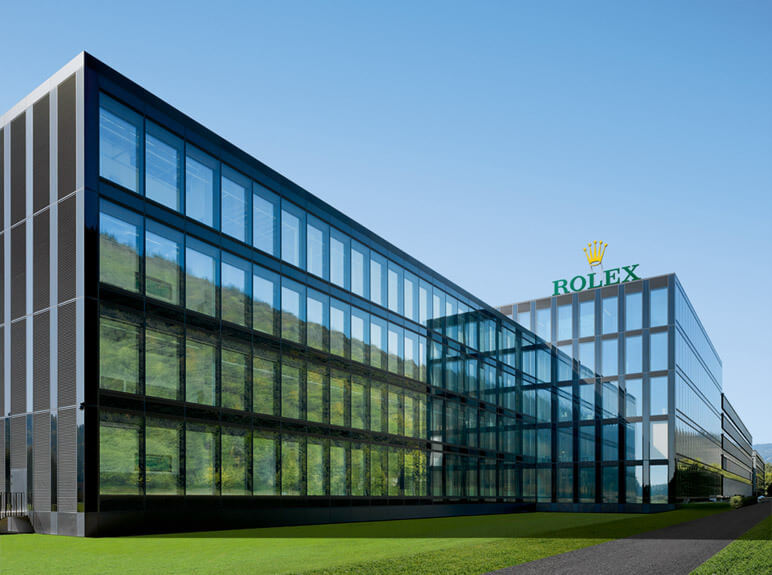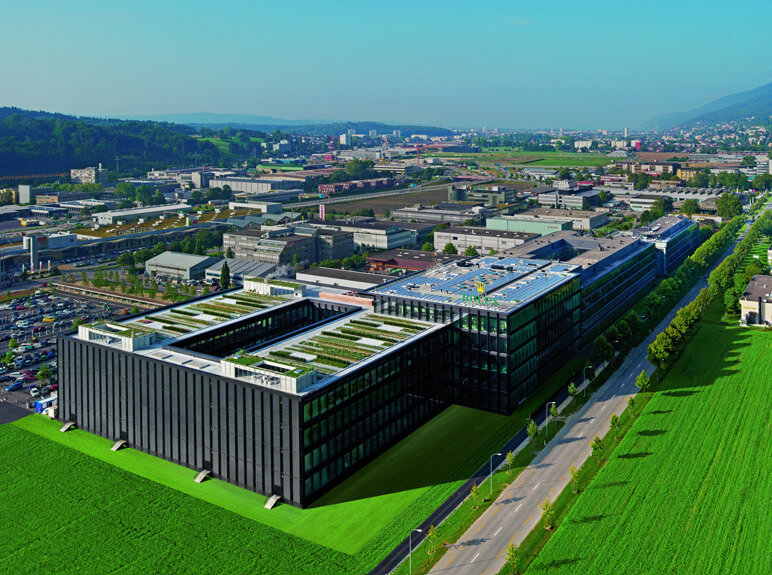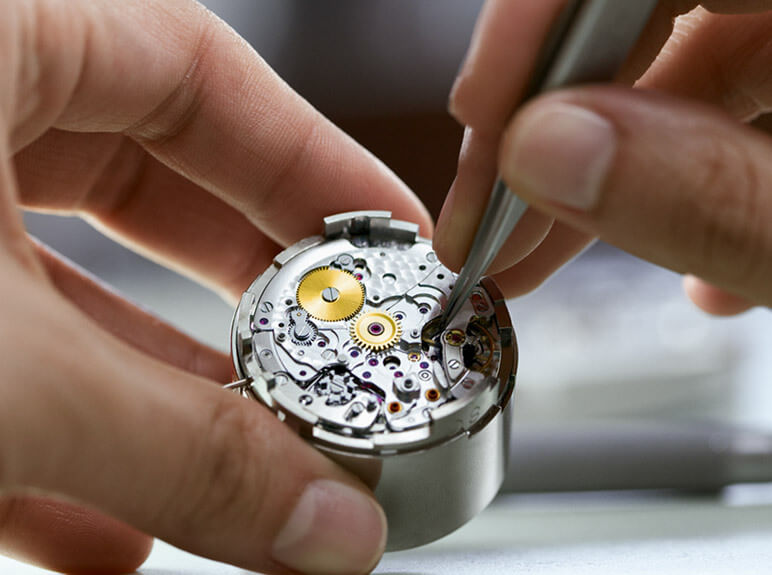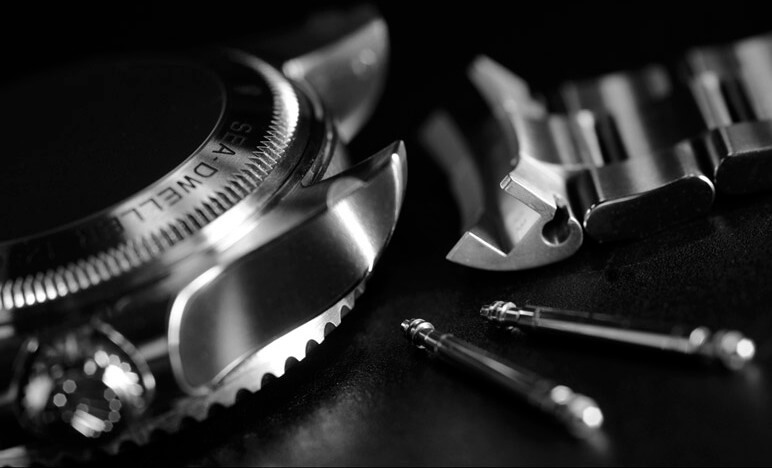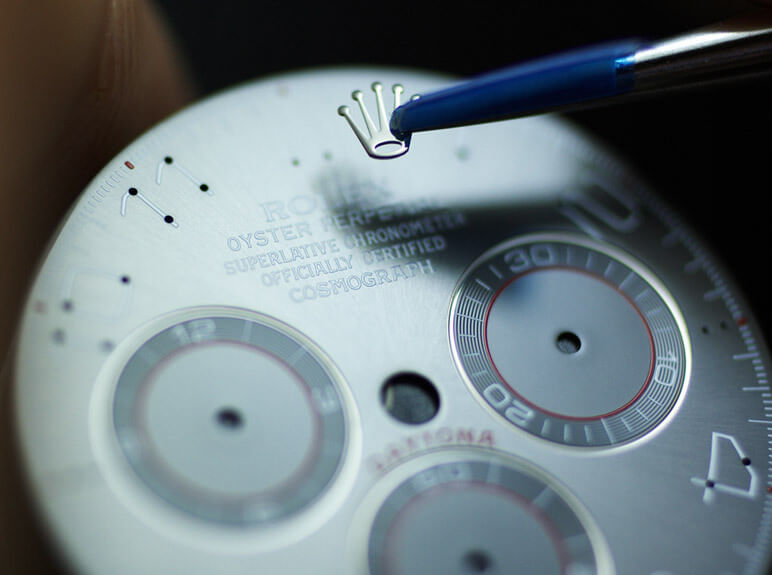The future wasn’t built in a day. Rolex has taken to heart this common-sense principle, an industrial self-evidence that is still all too often overlooked and rarely put into practice. The legendary brand, which is known to draw a veil of mystery over its activities at the same time as it stimulates its own symbology, recently completed a series of construction projects without precedent in the history of watchmaking.
After more than a decade of major developments, the brand, which is headquartered in Geneva, has centralised skills and vertically integrated production and expertise. In doing so, it has given itself manufacturing facilities that exceed anything that exists anywhere else in the watch industry. It has also made itself more independent of outside suppliers, a pressing concern for the industry after Swatch Group’s decision to cut third-party deliveries of strategic parts. When Bertrand Gros, Chairman of the independent firm, cut the ribbon at the new movement manufacturing plant in Bienne, his message that “Rolex is entering a new era” certainly rang true.

A two-tier strategy
Rolex rolled out the first stage in its strategy in the mid-1990s, with a simple objective: to integrate a majority of its suppliers. This was achieved through a series of takeovers, including the acquisition of strap manufacturer Gay Frères, dialmakers Beyeler & Cie, and crown manufacturer Boninchi. This concentration continued in 2002, when Montres Rolex and Rolex Industrie merged their activities in a new company, Rolex SA.
The brand embarked on stage two – to expand and upgrade production facilities – in earnest, and launched what industry insiders dubbed “the building site of the century”. Over an eight-year period, from 1998 to 2006, the company, which is held by the Wilsdorf Foundation, extended and focused its resources at its Geneva epicentre. Ten years spent staying ahead of the pack, commented one observer. Activities which had previously been spread across 17 sites in the canton were brought together at the head office in Les Acacias, and at production centres in Plan-les-Ouates (cases and bracelets) and Chêne-Bourg (dials and gem-setting).
The blueprint was the same across the board: rationalise flow, integrate new technologies, reduce energy consumption and increase productivity, with the single aim of achieving the highest standard of excellence and remaining at the cutting edge of technology. The company shelled out close to CHF 1 billion (USD 1.05 billion / EUR 0.83 billion ) to equip its facilities with the very latest machines, introduce an ultramodern inventory storage system, and invest in smelting and rolling equipment for precious metals. This figure should be viewed against the CHF 4 billion (USD 4.20 billion / EUR 3.32 billion) in annual revenues that position Rolex as the largest single watch brand in terms of sales. Prior to this, between 2009 and 2012 the company injected some CHF 250 million (USD 263 million / EUR 207 million) into its Bienne site to double the size of production facilities there.
Geneva and Bienne merge
This new site is where the brand now manufactures and assembles its movements, including the 4130, one of the most complex Rolex calibres with some 290 parts. Like every other of the brand’s movements, it is assembled according to tradition in a series of stages that emphasise human input and the added value of highly skilled labour, even though the parts themselves are manufactured using increasingly automated processes. Attention to detail is taken to the extreme. Depending on the movement part, one of the five lubricants which Rolex develops in-house, or has made by contractors working to exclusive and of course secret specifications, is applied in infinitely small and precisely dosed quantities. A few millionths of a litre suffice: too much, or too little, would be detrimental to the optimal working of the movement.
Another milestone occurred during this same decade, when the Geneva and Bienne firms merged. Historically and legally, Rolex Genève and Rolex Bienne were independent concerns, even though the latter supplied all its movements to the former. Again, colossal sums were involved with industry observers quoting figures in the region of CHF 2 billion (USD 2.10 billion / EUR 1.66 billion) for the acquisition. The brand, which in 1926 invented the first waterproof and dustproof watch, the aptly-named Oyster, is believed to have invested a total CHF 3.5 billion (USD 3.67 billion / EUR 2.90 billion) in construction work and acquisitions since the mid-1990s: more or less a year’s turnover.
As premises have ballooned in size, so have staff numbers. The Bienne site, for example, has doubled its headcount over a decade. The inventor of the Perpetual self-winding system in 1931 now employs more than 9,000 people in Switzerland and internationally, including subsidiaries. This figure also takes in sister brand Tudor, which is destined for greater independence though without upstaging its older sibling.
An enviable position
How might Rolex evolve in the future? It still has some way to go towards complete vertical integration. The company, which currently uses outside suppliers, may decide to add hands and sapphire crystal manufacturing to its skill set. It could also decide to step up production of balance-spring assembly sufficiently to become fully independent of Swatch Group supplies. “We have the ability to do everything in-house but we don’t necessarily produce all the parts ourselves,” says Marco Avenati, director of the Bienne plant.
Be that as it may, these ultra-sophisticated factories already see the manufacturing process through from beginning to end, and to the highest standards. Rolex standards, of course, which are in themselves a guarantee of reliability, durability, and some would say the ultimate marketing message. To take one example: the majority of brands recommend a five-yearly service for their watches; Rolex has raised the bar to ten years. Mastering the basics is the key to excellence, contained within an enduring and timeless style. These are the truths behind the Rolex recipe, its DNA. “We’re not resting on our laurels,” Avenati declares.
This approach has put Rolex in an enviable position. In the intimate circle of watchmaking, it’s been said that “there is Rolex and there are the others”. Not that “the others” are resting on their laurels either, particularly Omega which has locked horns with Rolex in a global battle to conquer market share. Will Rolex’s ultra-classic appeal continue into the future? A challenge the brand is clearly ready, willing… and able to tackle.







